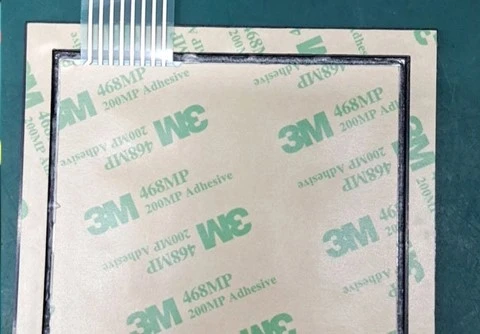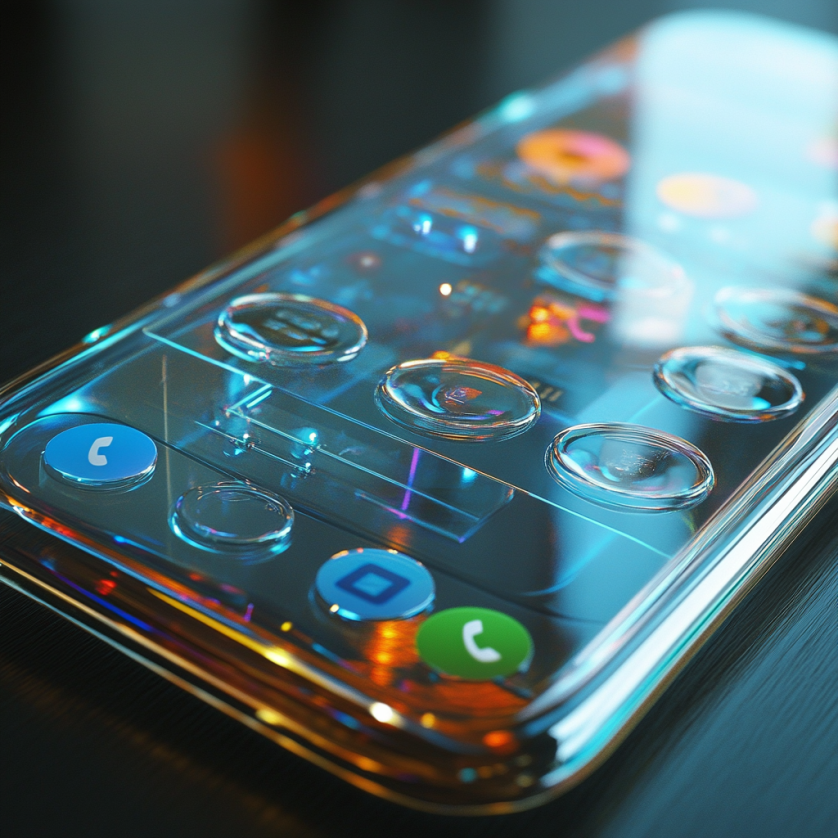
The design and application of transparent membrane dome switches cover various aspects, from material selection to functionality, ensuring their reliability and high performance in different environments. Based on user requirements, product characteristics, and usage conditions, the selection of panel materials is crucial in the early stages of engineering design. Below is a detailed analysis of the materials, structure, and applications involved in the design of transparent membrane dome switches.
The panel is one of the most important components of a membrane dome switch, as it directly affects the switch's appearance, durability, and functionality. When considering a custom membrane switch panel, it’s crucial to focus on the materials and design specifications to ensure optimal performance and longevity. The panel of transparent membrane dome switches is usually made from the following materials:
Polycarbonate (PC)
Advantages: Polycarbonate offers excellent heat resistance (from -60°C to 120°C), high transparency, and outstanding electrical insulation, making it ideal for applications that require high transparency and mechanical strength. PC panels are resistant to bending, stretching, and compression, and can withstand significant external forces, making them suitable for long-term use in products.
Disadvantages: However, PC has poor resistance to chemicals and is susceptible to damage from organic solvents. It can also develop stress cracks with prolonged use and is prone to oxidation, forming a peeling layer over time. Therefore, PC is primarily used in applications that require high transparency and environmental considerations, such as display windows or devices where the user needs to see the display screen through the button area.
Polyvinyl Chloride (PVC)
Advantages: PVC is stable to acids, alkalis, and salts, with excellent wear resistance and electrical insulation. It also has self-extinguishing properties when exposed to fire. It provides good chemical resistance and durability in environments with relatively low demands.
Disadvantages: PVC has poor heat stability (usable only between -20°C and 60°C), making it unsuitable for high-temperature environments. As a result, PVC is becoming less common in transparent membrane dome switch applications and is generally used only for labels in specific cases.
Polyester (PET)
Advantages: PET exhibits excellent chemical stability, is resistant to acids and alkalis, and is not affected by most organic solvents. It offers good electrical insulation and heat resistance (from -30°C to 160°C), making it one of the most commonly used materials for membrane dome switches. PET is particularly known for its wear resistance, excellent foldability, toughness, and high dimensional stability, making it ideal for environments with frequent usage and providing a long lifespan.
Disadvantages: Compared to PC, PET's transparency is slightly lower, but it is still sufficient to meet the basic transparency requirements of a transparent membrane dome switch.
Given that transparent membrane dome switches are often used in display screen areas, Polycarbonate (PC) is typically the most ideal choice, especially when high transparency is required. For a balance of durability and mechanical performance, Polyester (PET) is also an excellent choice.

The design of transparent membrane dome switches has led to their widespread use across several industries, particularly in products that require high aesthetic standards, ease of operation, and durability. When opting for a custom membrane keyboard, these transparent switches can be integrated to enhance the visual appeal and functionality of the device.
Consumer Electronics
Transparent membrane dome switches are commonly integrated with display screens in consumer electronics such as smartphones, tablets, and home appliance control panels. This combination provides excellent tactile feedback while maintaining transparency and aesthetic appeal. For example, certain home appliances use transparent membrane dome switches for control panels or display screen areas, allowing users to clearly see the display content without obstruction from buttons.
Automotive Electronics
In the automotive sector, transparent membrane dome switches are widely used, especially in high-end vehicle dashboards and entertainment system control panels. The transparent panel seamlessly integrates with the instrument screen, making the interface simpler, more modern, and enhancing the overall driving experience.

Medical Devices
Transparent membrane dome switches are extensively used in medical equipment such as monitoring devices and medical instruments. The transparent design not only ensures the clarity of the operating interface but also makes it easier to clean the device, meeting the high hygiene standards required in medical environments.
Smart Home and IoT Devices
With the development of smart home technology, transparent membrane dome switches are increasingly used in devices like smart lighting controls, temperature control systems, and smart locks. The transparent design enhances the product's modern aesthetic, creating a stronger interactive and visual impact.
The design of transparent membrane dome switches takes into account not only their appearance and transparency but also user experience, environmental adaptability, and long-term stability. The selection of panel materials is a critical aspect of the design, with materials like Polycarbonate (PC), Polyester (PET), and Polyvinyl Chloride (PVC) being used depending on the specific application requirements (e.g., transparency, heat resistance, chemical resistance).
These switches are commonly used in consumer electronics, automotive, medical devices, and smart home products, with an ever-expanding range of applications as technology advances.